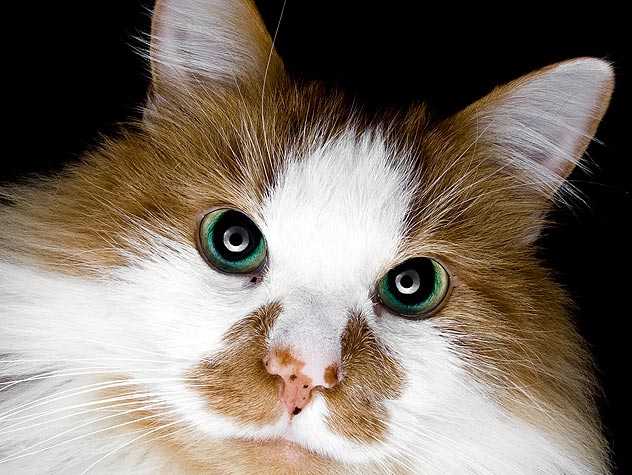What is in Cat Litter?

If you're a cat parent, cat litter is probably the Number 1 feline necessity in your home -- other than cat food, of course. But as critical as it is to everyday life with your kitty, you may not know what's in it. In fact, you may have even asked yourself: "Is the litter I buy completely safe? How do I know which type is best? Are there environmentally-friendly varieties? Can I make my own?"
Cat litter comes in a wide variety of materials with bases made from everything from clay to corn to crystals. Here’s the scoop on some of the most common types of cat litter:
Clay-Based Cat Litter
Cat litter is a fairly modern product. Even though cats have been human companions for nearly 10,000 years[1], it was only this past century that we started bringing them indoors with us fulltime. Prior to World War II, cat parents used boxes of sand or furnace ashes as indoor toilets for their felines -- but that solution proved undesirable. "Housewives of the 1940s were none too enamored with cats tracking ashes or sand through their homes,” says the ASPCA.
Fortunately, an effective solution was discovered shortly after World War II. A businessman named Edward Lowe recommended that a neighbor fill a box with absorbent, granulated clay -- a mineral Lowe's father’s company used as an industrial absorbent. The neighbor found that the clay was successful in absorbing her cat's urine, as well as at reducing both tracking and odor.
About.com notes, “In 1947, Edward Lowe decided to package the clay in 5lb bags marked ‘kitty litter’ to sell in a local pet store.” Mr. Lowe was soon able to transform this discovery into an empire we now know as Kitty Litter.
Bentonite and Silica for Clumps
Granulated, clay-based cat litter is still sold today. In fact, clay -- in general -- is one of the most-used elements of cat litter. But in the 1980s cat litter was transformed again…
“In the early 1980s, Thomas Nelson discovered that a certain type of clay, bentonite, formed clumps in the presence of moisture, and voilà … clumping kitty litter,” notes Dr. Justine Lee of PetMD. When Dr. Nelson tried this new clay litter out in his own cats' litter box, he found that he could simply remove the clumps when they dried instead replacing all of the litter with each use[2]. Dr. Lee goes on to point out, “according to a U.S. Geological Survey, approximately 987,000 metric tons of this clumping clay was mined in 2003 for cat litter.”
Eventually, silica -- a component of quartz -- was also introduced as clumping agent to many brands of cat litter. “Silica [like bentonite] is also a physically and chemically inert substance, and is a major component found in ordinary sand. Silica is also used as a moisture-absorbing agent in the little packets found in shoe boxes, medications and some foods,” notes the ASPCA. Silica gel is the main ingredient in some “crystal” cat litters today.[3]
Is Clumping Cat Litter Safe?
While clumping (also known as "scoopable") cat litter is one of the most convenient options available, there have been concerns that it's toxic to pets. According to the poison control experts at the ASPCA, however, clumping litter is overall quite safe, posing only minor gastrointestinal symptoms in some animals when ingested.
The biggest threat is when large amounts of litter are eaten, which can sometimes happen when a dog decides to dine on the contents of a litter box or a kitten is first learning how to use the litter box. To be sure your pet is safe, don’t use clumping cat litter for kittens and learn how to stop dog litter box snacking.
A Plethora of Eco-Friendly Options
For "green" cat parents, there are also more environmentally friendly cat litters available that are not strip-mined like the clay-based litters. These formulas usually include various combinations of renewable or recycled products such as:
- Newspaper
- Wheat
- Pine and cedar chips
- Sawdust shavings
- Processed orange peels
- Corncobs
- Peanut shell meal.
You can even make your own cat litter using these or similar products. The Internet is filled with cat litter "recipes" created by inventive pet parents. Just be warned that your kitty might not be as keen on alternative cat litter as you are. To make sure your cat’s ok with any new litter you try, be sure to set up a litter cafeteria. Listening to your kitty’s litter preferences will help avoid a world stains and messes down the road.
Carbon and Baking Soda Additives
Many of today's cat litter brands add odor absorbers to their formulas. Two common forms of odor control are carbon and baking soda. Fragrances are also added to some brands. Certain types of environmentally-friendly litter products, such as pine and cedar chips, are said to be natural odor absorbers by their manufacturers. If you’re interested in trying a scented brand, be sure to try a litter cafeteria first as many cats don’t like scented litters.
Choosing the Best Formula for Your Cat
Even though you now know what's in the different types of litter, only your cat knows which kind he prefers best. Cats can be picky about their litter boxes, so sometimes you'll need to try out a few different types before finding the one that works best for both her and you. Check out how to pick the best cat litter for you and your cat.
Additional Sources for Reference:
http://www.nytimes.com/1995/10/06/us/edward-lowe-dies-at-75-a-hunch-led-him-to-create-kitty-litter.html
http://www.scientificamerican.com/article.cfm?id=the-taming-of-the-cat
http://www.aspca.org/pet-care/cat-care/cat-litter.aspx
http://www.petmd.com/blogs/thedailyvet/jlee/2011/mar/clay_vs_clumping_litter#.UUy-u7-IdU0
http://www.petsadviser.com/pet-products/best-cat-litter-odor-control/
http://frugal-cafe.com/diy-at-home/articles/diy-concoctions-odor-beaters.html
[1] http://www.scientificamerican.com/article.cfm?id=the-taming-of-the-cat
[2] http://www.aspca.org/pet-care/cat-care/cat-litter.aspx
[3] http://www.petco.com/product/107848/Petco-Crystal-Cat-Litter.aspx